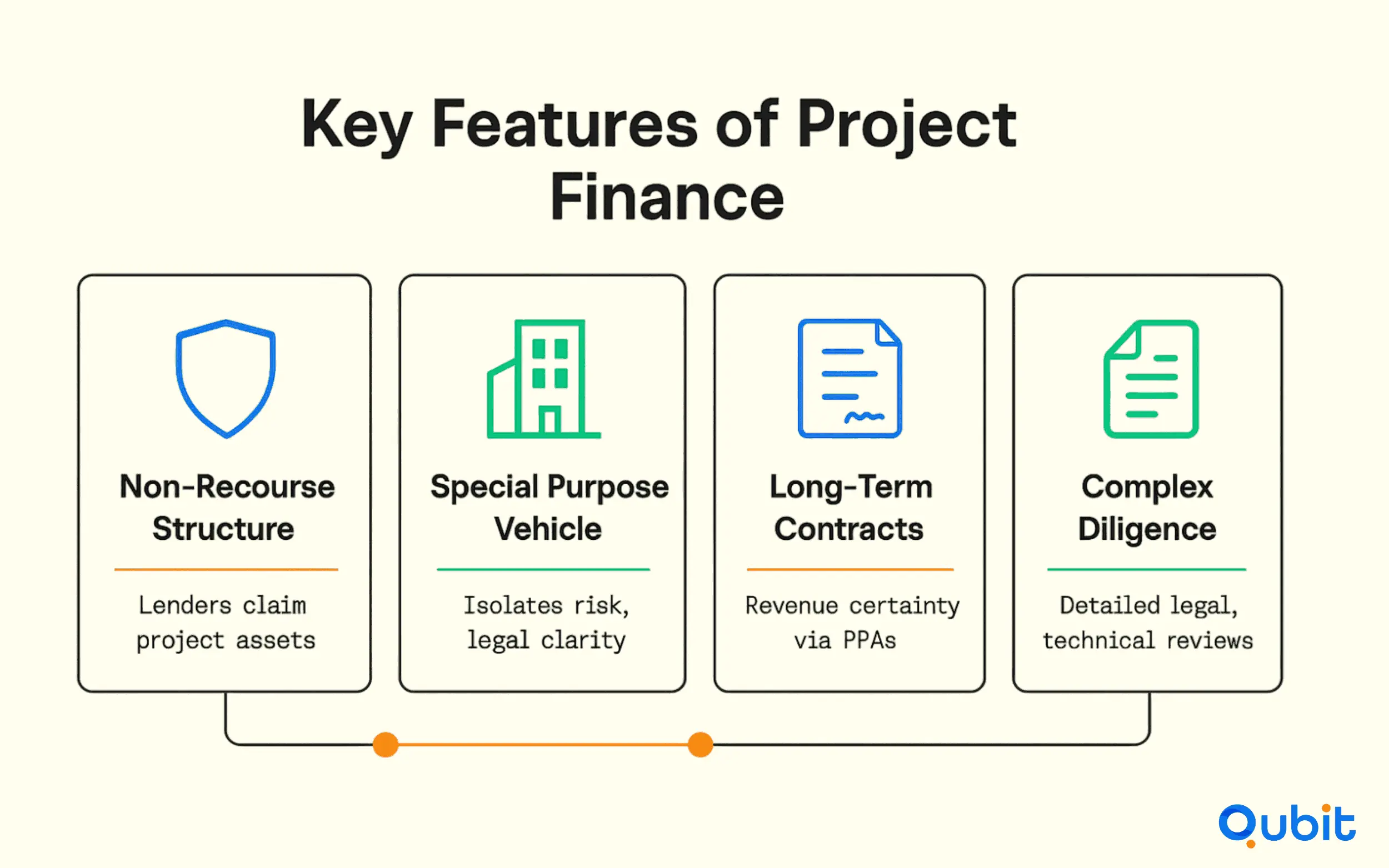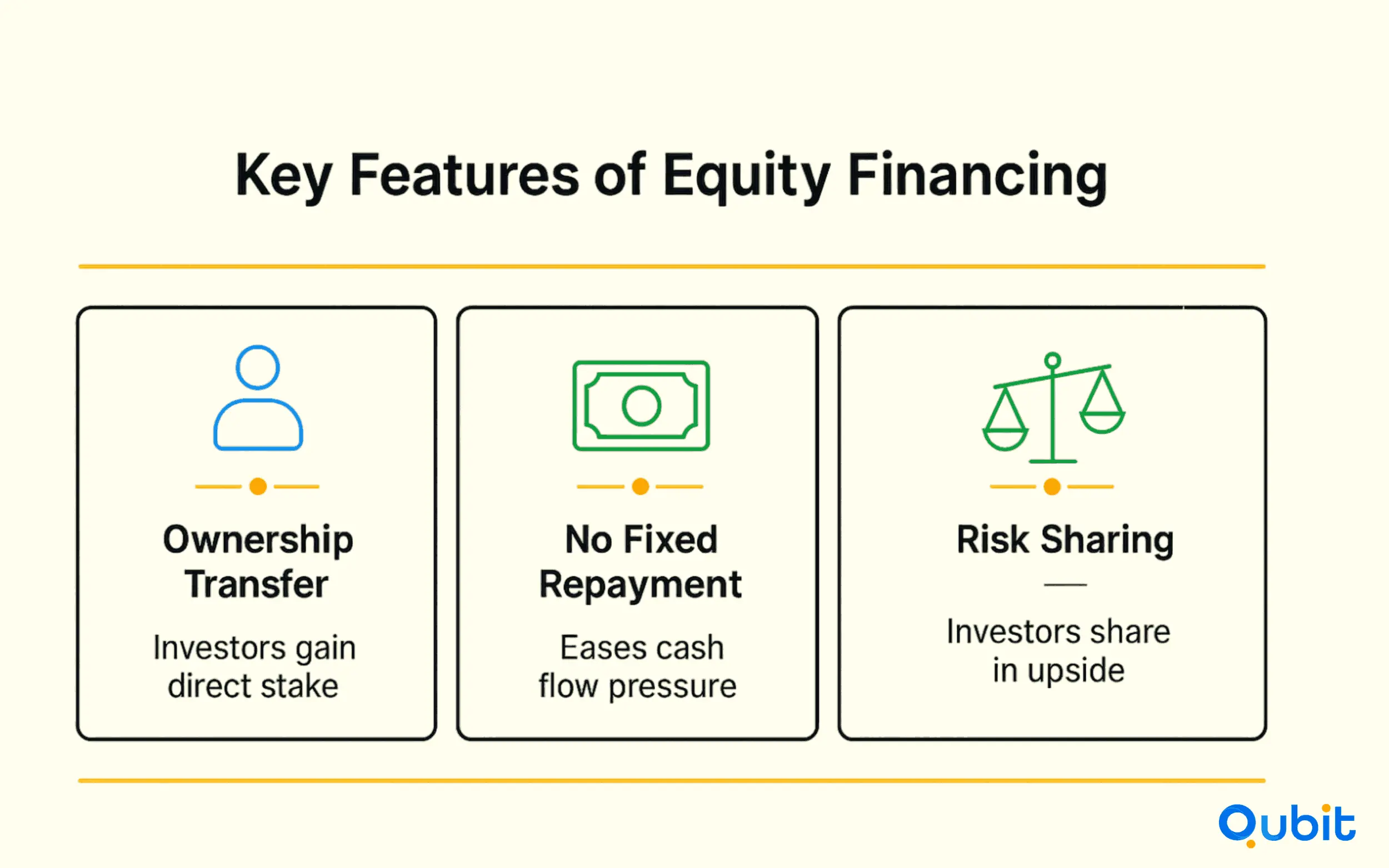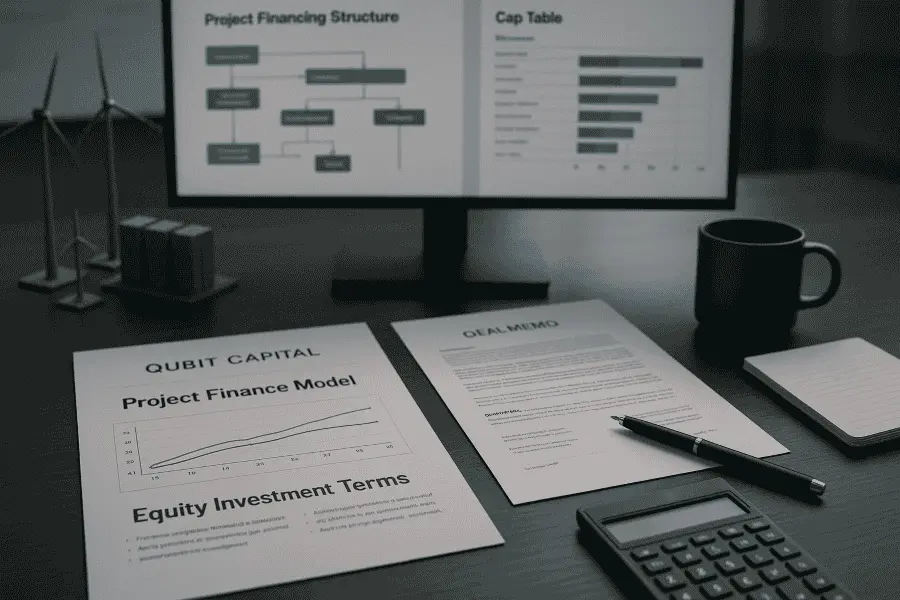The global push for decarbonization and energy transition has propelled cleantech infrastructure to the forefront of investment priorities in 2025. As solar, wind, battery storage, green hydrogen, and digital infrastructure projects scale up, the question of how to fund these capital-intensive ventures becomes more pressing than ever. Two primary funding models—project finance and equity, dominate the landscape, each with distinct advantages, challenges, and strategic considerations.
This article explores the nuances of project finance versus equity for large cleantech infrastructure, offering founders, investors, and policymakers a comprehensive guide to structuring successful deals in a rapidly evolving sector.
Understanding the Cleantech Funding Landscape
Cleantech infrastructure projects—whether utility-scale renewables, energy storage, or next-generation hydrogen plants—require massive upfront capital, long development cycles, and robust risk management. The sector’s capital needs are only increasing: European cleantech alone faces an investment gap of over €100 billion by 2030, with similar shortfalls in North America and Asia.
Early-stage equity is essential for seeding innovation, supporting R&D, and scaling startups. However, as projects mature, the funding mix must evolve. Late-stage deployments and commercial expansions demand access to larger, lower-cost capital pools—where project finance plays a crucial role. For a better understanding you can study about different cleantech strategies and opportunities.
Let's get started!
What Is Project Finance?
Project finance is a specialized, non-recourse funding structure used for large, capital-intensive infrastructure projects. Rather than relying on the balance sheet of the project sponsor, project finance raises debt and equity based on the projected cash flows of the project itself. Lenders and investors are repaid from the revenues generated by the project, typically secured through long-term contracts such as power purchase agreements (PPAs) or offtake agreements.
Key Features of Project Finance

- Non-Recourse or Limited Recourse: Lenders have claims only on the project’s assets and cash flows, not on the sponsor’s broader balance sheet.
- Special Purpose Vehicle (SPV): Projects are often structured as independent legal entities, isolating risk and simplifying management.
- Long-Term Contracts: Revenue certainty is achieved through PPAs, feed-in tariffs, or other long-term offtake agreements.
- Complex Diligence and Structuring: Lenders require detailed technical, legal, and financial due diligence, including risk assessments, insurance, and compliance with regulatory requirements.
Project finance has become mainstream for renewables, battery storage, and even digital infrastructure, with the scope expanding to semiconductor fabs and telecom networks in 2025. The market outlook remains steady, with solar power expected to outpace wind and battery energy storage now widely accepted by project financiers.
What Is Equity Financing?
Equity financing involves raising capital by selling ownership stakes in a project or company. Investors—be they venture capitalists, private equity funds, or strategic partners, provide funds in exchange for a share of future profits and, often, a say in governance.
Key Features of Equity Financing

- Ownership Transfer: Investors gain a direct stake in the project or company and share in its upside (and risks).
- No Fixed Repayment: Unlike debt, equity does not require regular interest or principal payments, easing cash flow pressures.
- Risk Sharing: Equity investors bear the risk of project underperformance but also participate in any upside.
- Flexible Use of Funds: Equity can be used for R&D, early-stage growth, or to bridge funding gaps where debt is unavailable.
Equity financing is often the only viable option for early-stage cleantech startups, especially those developing new technologies or entering unproven markets.
Comparing Project Finance and Equity: Pros and Cons
| Aspect | Project Finance | Equity Financing |
|---|---|---|
| Repayment | Fixed schedule from project cash flows | No fixed repayment; returns depend on project success |
| Ownership | No ownership transfer; lenders have collateral rights | Investors gain ownership stakes |
| Risk | Lenders focus on project viability; limited recourse | Equity holders share in both risk and reward |
| Cost of Capital | Typically lower (senior debt) | Higher, as investors seek greater returns |
| Use Case | Mature, cash-flowing infrastructure | Early-stage, R&D, or high-risk projects |
| Flexibility | Less flexible, highly structured | More flexible, but dilutive |
| Due Diligence | Extensive, with technical and legal requirements | Focused on team, technology, and market potential |
When to Use Project Finance
1. Large, Mature Infrastructure Projects
Project finance is ideal for utility-scale renewables, battery storage, transmission, and other infrastructure where revenues are predictable and secured by long-term contracts. The model shields sponsors from direct liability and allows for high leverage, reducing the cost of capital.
2. Risk Mitigation and Capital Efficiency
Project finance structures are designed to insulate cash flows from macroeconomic volatility, relying on strong offtakers and prudent risk allocation. This makes them attractive to institutional investors, green banks, and development finance institutions seeking stable, long-term returns.
3. Scaling Proven Technologies
As technologies mature, solar, wind, and now battery storage—project finance enables rapid deployment at scale. The solar industry’s journey from niche technology to mainstream power source is a case study in how project finance can drive cost reductions and adoption.
4. Accessing Specialized Capital Pools
Specialized infrastructure funds, pension funds, and insurance companies are increasingly allocating capital to project-financed cleantech. These investors bring large check sizes and require lower returns than early-stage equity, making them essential for gigawatt-scale projects.
When to Use Equity Financing
1. Early-Stage Innovation and R&D
Equity is crucial for startups developing new technologies, where risks are high and cash flows are uncertain. Venture capital and angel investors provide the risk capital needed to bridge the gap from lab to pilot scale.
2. First-of-a-Kind (FOAK) Projects
When deploying unproven technologies, equity investors are more willing than lenders to absorb technical and market risks. Blended finance models, combining equity, grants, and catalytic capital—are often used to de-risk these projects.
3. Growth and Expansion
Equity can fund operational expansion, talent acquisition, and market entry, especially when debt is unavailable or too restrictive. Private equity and strategic investors play a key role in scaling successful ventures.
4. Flexible Capital for Uncertain Markets
Equity offers flexibility for projects in emerging markets or those subject to policy uncertainty. Investors can adapt to changing conditions and pursue upside opportunities as the market evolves.
The Climate Capital Stack: Blending Project Finance and Equity
In practice, most large cleantech projects use a blend of project finance and equity. The “climate capital stack” typically includes:
- Sponsor Equity: Initial capital from developers or strategic investors.
- Project Debt: Senior loans from banks or institutional lenders, secured by project assets and cash flows.
- Tax Equity: Especially in the U.S., tax equity investors monetize credits and incentives, providing additional capital.
- Subordinated/Mezzanine Debt: Higher-risk, higher-return debt to fill funding gaps.
- Government Grants and Incentives: Non-dilutive capital to de-risk early stages (see Leveraging Government Grants, Tax Credits & Incentives).
- Corporate Partnerships: Strategic partners may provide equity, offtake agreements, or technical expertise to move demonstration projects forward. Learn more about how corporate partnerships can fund demonstration projects in cleantech.
This layered approach allows sponsors to optimize their cost of capital, manage risk, and attract a diverse set of investors. The mix depends on project maturity, technology readiness, market conditions, and policy support.
Real-World Examples: Solar, Wind, and Beyond
Solar Power: From Equity to Project Finance
The solar industry’s evolution offers valuable lessons. Early projects relied on equity from developers and venture capital. As costs fell and business models matured, project finance became the dominant model, leveraging long-term PPAs and tax equity to unlock massive deployment. Today, solar is among the most bankable asset classes, with project finance driving global expansion.
Battery Storage: Mainstreaming Project Finance
Battery energy storage, once considered too risky for project finance, is now widely accepted by lenders and grid operators. The rise of merchant storage, capacity contracts, and innovative revenue stacking has made cash flows more predictable, attracting both debt and equity investors.
Green Hydrogen and Digital Infrastructure
Emerging sectors like green hydrogen and digital infrastructure are beginning to access project finance, though equity remains crucial for early-stage development. As these markets mature, expect to see more hybrid structures and innovative financing models.
Key Considerations for Cleantech Project Sponsors
1. Revenue Certainty and Offtake Agreements
Project finance relies on predictable cash flows. Securing long-term contracts with creditworthy offtakers is essential for attracting debt and lowering the cost of capital.
2. Technology and Market Risk
Lenders are wary of unproven technologies. Demonstrating technical validation, pilot results, and market demand is critical for moving from equity to project finance.
3. Policy and Regulatory Stability
Policy incentives, tax credits, and regulatory clarity can make or break a project’s bankability. Sudden changes in policy or tariffs can disrupt financing and stall deployment. For a detailed look at how policy shapes funding, see Addressing Capital-Intensive Challenges in Cleantech Funding.
4. Capital Stack Optimization
Balancing debt and equity allows sponsors to manage risk, maximize returns, and attract a broader investor base. The optimal mix evolves as projects mature and market conditions change.
5. Workforce and Execution
Beyond capital, scaling cleantech requires skilled labor, robust supply chains, and effective project management. Investors increasingly scrutinize execution risk alongside financial metrics.
The Role of Government and Public-Private Partnerships
Government support remains vital for bridging funding gaps, especially for first-of-a-kind projects and emerging markets. Grants, tax credits, and concessional loans help de-risk investments and crowd in private capital. Public-private partnerships are increasingly used to finance demonstration projects and accelerate commercialization.
Strategic Corporate Partnerships
Corporate partners, utilities, industrials, and technology firms—are playing a growing role in funding cleantech infrastructure. They provide not only capital but also market access, technical expertise, and offtake agreements. These partnerships are essential for moving demonstration projects to commercial scale and unlocking new markets.
Discover how strategic corporate partnerships are reshaping cleantech funding.
Navigating the Future: Trends and Takeaways
- Project finance is expanding beyond traditional renewables to include storage, digital infrastructure, and advanced manufacturing.
- Equity remains indispensable for early-stage innovation and high-risk projects.
- Hybrid capital stacks—combining debt, equity, grants, and corporate partnerships—are the new norm.
- Policy stability, revenue certainty, and technical validation are critical for unlocking large-scale capital.
- New asset classes and innovative financing models are broadening the scope of project finance in 2025.
Conclusion
Choosing between project finance and equity is not a binary decision but a strategic one, shaped by project maturity, technology readiness, and market context. Successful cleantech infrastructure projects blend both models, leveraging the strengths of each to unlock the capital needed for global decarbonization.
For startups and sponsors navigating this landscape, understanding the climate capital stack and building strong partnerships with government, corporates, and specialized investors—is essential. As the sector evolves, those who master the art of capital structuring will be best positioned to scale the solutions that will define the next decade of clean energy.
If you're ready to elevate your approach, explore our Fundraising Assistance service. Let us help you turn your vision into reality.
Key Takeaways
- Cleantech infrastructure funding in 2025 is increasingly split between project finance for mature, cash-flowing assets and equity for early-stage innovation and high-risk projects.
- Project finance offers lower-cost, non-recourse capital ideal for large-scale renewables, storage, and hydrogen, but requires predictable cash flows and strong offtake agreements.
- Equity remains crucial for startups and first-of-a-kind projects, enabling flexibility and risk-sharing when cash flows are uncertain or technologies are unproven.
- Blended capital stacks—combining project finance, equity, government incentives, and strategic partnerships—are now the norm for scaling cleantech infrastructure.
- Securing the right funding mix depends on project maturity, technology readiness, policy stability, and the ability to demonstrate commercial traction or secure strategic partners.
Frequently asked Questions
What is the main difference between project finance and equity for cleantech infrastructure?
Project finance is a non-recourse funding model based on the project’s own cash flows and assets, typically used for large, mature projects with predictable revenues. Equity involves selling ownership stakes and is more flexible, often used for early-stage or higher-risk ventures.






